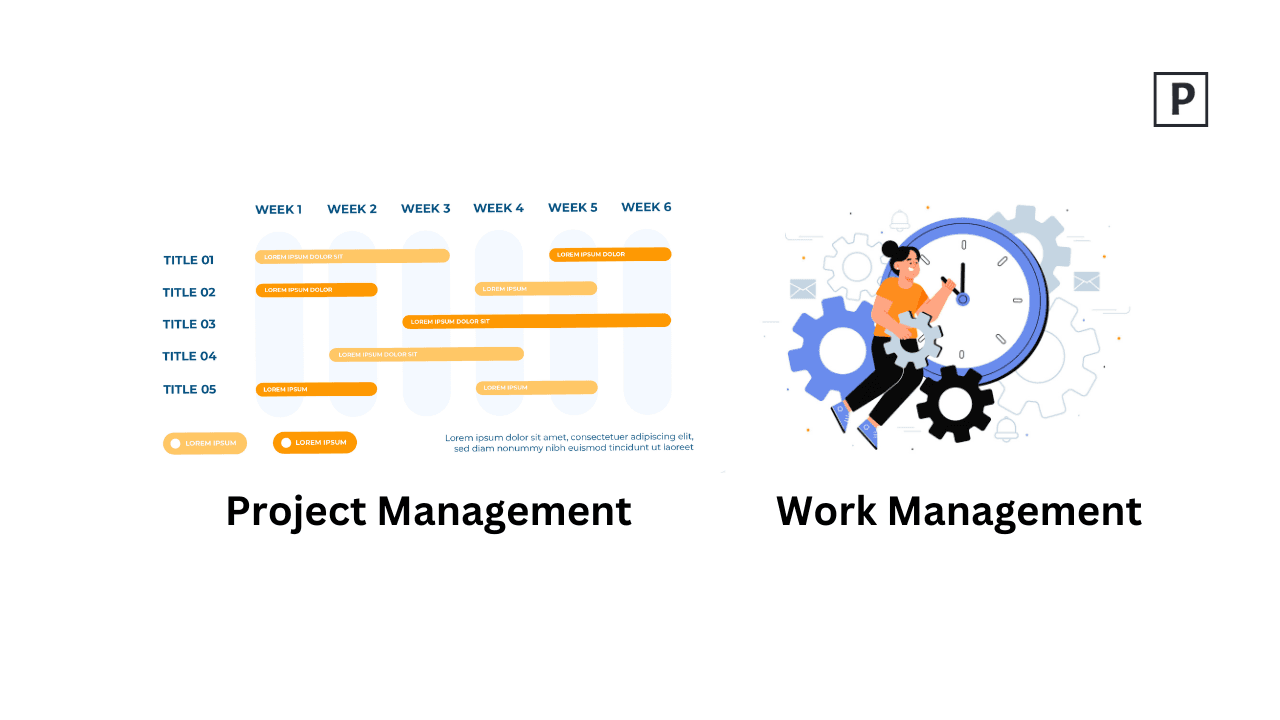One of the biggest challenges for businesses is ensuring a smooth transition from client acquisition to active project collaboration. Often, initial interactions between you and clients can be fraught with confusion, misaligned expectations, and ineffective communication, setting a negative tone for the project.
This lack of clarity can result in misunderstandings, delays, and ultimately, a strained client relationship. To combat these issues, a well-structured onboarding process is crucial. By integrating customizable onboarding templates, setup wizards, client portals, and automated notifications, you can streamline client integration into the project workflow.
These tools not only facilitate a smooth onboarding experience but also help in setting clear expectations and fostering effective collaboration.
Streamlining the Onboarding Process
The onboarding process is the first step in establishing a productive relationship with your client. A well-designed onboarding process ensures that clients are seamlessly integrated into the project workflow, setting clear expectations and reducing potential misunderstandings.
Customizable Onboarding Templates: Project management software often comes with customizable onboarding templates. These templates can be tailored to meet the specific needs of each client, providing a structured framework for introducing them to the project. This customization helps in addressing client-specific requirements right from the start.
Setup Wizards: Many tools feature setup wizards that guide clients through the initial stages of project setup. These wizards simplify the process of defining project scopes, setting goals, and assigning tasks, ensuring that clients are well-prepared and informed about their roles and responsibilities.
Client Portals: A dedicated client portal provides clients with a centralized location to access project information, documents, and timelines. This portal fosters transparency and keeps clients informed about project progress, reducing the need for repetitive explanations and follow-ups.
Automated Notifications: Automated notifications keep clients updated on important milestones, changes, and upcoming deadlines. This proactive communication helps in managing client expectations and ensuring that they are always in the loop.
Simplifying Proposal Writing
Proposals are a critical component of project initiation, outlining the scope of work, deliverables, and timelines. Efficient proposal management is essential for closing deals and setting the stage for successful project execution.
Pre-Designed Templates: Project management software often provides pre-designed proposal templates that can be customized according to client needs. These templates help in creating professional and consistent proposals quickly, ensuring that all necessary elements are included.
Version Control: Managing revisions and updates to proposals can be challenging. Tools with version control features track changes and maintain a history of all revisions. This allows for easy access to previous versions and ensures that all stakeholders can review and provide input on the latest proposal drafts.
Collaborative Editing: Real-time collaborative editing features enable multiple stakeholders to work on a proposal simultaneously. This collaboration streamlines the review process, allowing team members and clients to provide feedback and make changes directly within the proposal document.
Proposal Tracking: Tools often include tracking functionalities that monitor the status of proposals. This includes tracking when proposals are viewed, accepted, or rejected. This information helps in understanding client engagement and adjusting strategies as needed.
Enhancing Client Communication
Clear and effective communication is key to maintaining a strong client relationship. Project management software offers various features to enhance communication and ensure that all parties are aligned throughout the project.
Integrated Messaging Systems: Many tools include integrated messaging systems that centralize all project-related communications. This ensures that messages, discussions, and updates are easily accessible and organized, reducing the risk of miscommunication.
Video Conferencing Integration: Integration with video conferencing tools allows for seamless virtual meetings and discussions. This feature is especially valuable for remote teams and clients, providing a platform for face-to-face interactions and real-time collaboration.
Centralized Communication Threads: Centralized communication threads within project management software capture all relevant discussions and updates in one place. This feature helps in maintaining a clear record of communications and ensures that everyone involved is informed about project developments.
Automated Reminders: Automated reminders and notifications keep clients and team members aware of upcoming meetings, deadlines, and tasks. This feature helps in managing schedules and ensuring timely communication.
Also read: Managing Client Expectations: How to Align Timelines with Deliverables
Controlling Client Access and Permissions
Managing access to project information is crucial for maintaining data security and ensuring that clients have the appropriate level of visibility into their projects.
Granular Access Controls: Project management software offers granular access controls that allow you to set specific permissions for each client. This ensures that clients can view and interact with only the information relevant to their projects, protecting sensitive data.
Role-Based Permissions: Role-based permissions enable you to assign different access levels based on client roles. For example, some clients may need full access to all project documents, while others may only require access to certain sections or reports.
Customizable Access Settings: Customizable access settings allow you to define exactly what information and functionalities clients can access. This level of control helps in managing client interactions and ensuring that data is secure.
Audit Trails: Audit trails track all client interactions with project data, including access and modifications. This feature helps in monitoring client activity and ensuring compliance with data security policies.
Aligning and Managing Client Expectations
Meeting client expectations is essential for project success and satisfaction. Project management software provides various features to help set and manage these expectations effectively.
Goal-Setting Features: Tools with goal-setting features enable you to define clear and measurable objectives for the project. By setting specific goals and milestones, you can align client expectations with project deliverables and track progress toward achieving these goals.
Milestone Tracking: Milestone tracking features allow you to monitor key project milestones and deliverables. By providing regular updates on milestone progress, you can keep clients informed and ensure that expectations are met throughout the project lifecycle.
Progress Reports: Regular progress reports provide clients with detailed insights into project status, achievements, and any issues that may arise. These reports help in managing expectations and addressing any concerns promptly.
Feedback Mechanisms: Tools that incorporate feedback mechanisms enable clients to provide input and express their concerns during the project. By actively seeking and addressing client feedback, you can better align project outcomes with their expectations and enhance overall satisfaction.
Also read: Overcoming Common Challenges in Project Goal Setting
Tracking and Reporting Project Performance
Monitoring project performance is essential for evaluating success and identifying areas for improvement. Effective tracking and reporting tools provide valuable insights into project outcomes.
Performance Metrics: Project management software often includes performance metrics that measure various aspects of the project, such as task completion rates, budget adherence, and milestone achievements. These metrics help assess how well the project is progressing and whether it is on track to meet its objectives.
Customizable Reports: Customizable reporting allows you to generate reports tailored to specific client needs or project requirements. These reports provide a detailed overview of project performance, helping you present information in a clear and meaningful way.
KPI Tracking: Key Performance Indicators (KPIs) track specific aspects of project success, such as client satisfaction, budget efficiency, and timeline adherence. Monitoring KPIs helps in evaluating the overall effectiveness of the project management strategy and identifying areas for improvement.
Trend Analysis: Advanced reporting tools enable trend analysis by comparing current project data with historical data. This analysis helps in understanding performance patterns and making informed decisions to enhance future project outcomes.
Integrating and Acting on Client Feedback
Client feedback is vital for refining project outcomes and ensuring that deliverables meet expectations. Effective integration and management of feedback can lead to improved client satisfaction and project success.
Feedback Collection Tools: Project management software often includes features for collecting feedback directly within the platform. Clients can submit their comments, suggestions, or concerns through dedicated feedback forms or comment sections, ensuring that their input is captured efficiently.
Real-Time Feedback Integration: Tools that allow for real-time integration of feedback enable you to address client comments and make adjustments promptly. This feature helps in maintaining a dynamic approach to project management, ensuring that client feedback is incorporated into ongoing work.
Feedback Prioritization: Prioritizing feedback helps in addressing the most critical issues first. Project management software often provides mechanisms to categorize and prioritize client feedback based on its impact on the project, allowing you to focus on the most significant concerns and implement changes effectively.
Actionable Insights: Advanced reporting features in project management software can translate client feedback into actionable insights. By analyzing feedback trends and patterns, you can make data-driven decisions that enhance project outcomes and client satisfaction.
This might help: Integrating Risk Management into Goal Setting
Providing Visibility into Project Progress
Transparency is key to maintaining trust and confidence with clients. Providing clear visibility into project progress helps keep clients informed and engaged.
Customizable Dashboards: Project management software offers customizable dashboards that present real-time data on project status, timelines, and key metrics. Clients can access these dashboards to view up-to-date information, enhancing their understanding of project progress.
Detailed Reporting: Detailed reporting features provide clients with comprehensive insights into various aspects of the project, including milestones achieved, budget status, and task completion rates. Regular reports keep clients informed and help in managing their expectations.
Progress Updates: Regular progress updates through automated notifications or scheduled reports ensure that clients are kept aware of any changes or developments. This proactive approach helps prevent surprises and maintains transparency throughout the project lifecycle.
Visual Project Timelines: Visual project timelines, such as Gantt charts or Kanban boards, provide a clear representation of project schedules and progress. These visual tools help clients easily understand how tasks are progressing and how they fit into the overall project timeline.
Supporting Collaborative Efforts
Collaboration between teams and clients is crucial for achieving project goals. Effective collaboration tools facilitate seamless coordination and communication.
Shared Workspaces: Project management software provides shared workspaces where teams and clients can collaborate on documents, tasks, and project plans. These workspaces ensure that everyone involved has access to the same information and can contribute to the project effectively.
Collaborative Document Editing: Real-time collaborative document editing allows multiple users to work on the same document simultaneously. This feature helps streamline the review and approval process, enabling faster decision-making and reducing the time required for document revisions.
Task Management Tools: Task management features, such as task assignments, deadlines, and progress tracking, support effective collaboration by clarifying responsibilities and ensuring that tasks are completed on time. These tools help keep everyone aligned and focused on project goals.
Communication Channels: Integrated communication channels, such as messaging systems or discussion forums, facilitate ongoing collaboration and information sharing. These channels help maintain a clear line of communication between teams and clients, fostering a collaborative environment.
Conclusion
A streamlined onboarding process, supported by customizable templates, setup wizards, client portals, and automated notifications, can set clear expectations and facilitate effective collaboration from the start.
By leveraging these tools, you can enhance client communication, manage access and permissions, align expectations, and integrate feedback effectively.
For a more tailored and efficient project management experience, consider exploring how Pinrom can support your client onboarding and project management needs.











